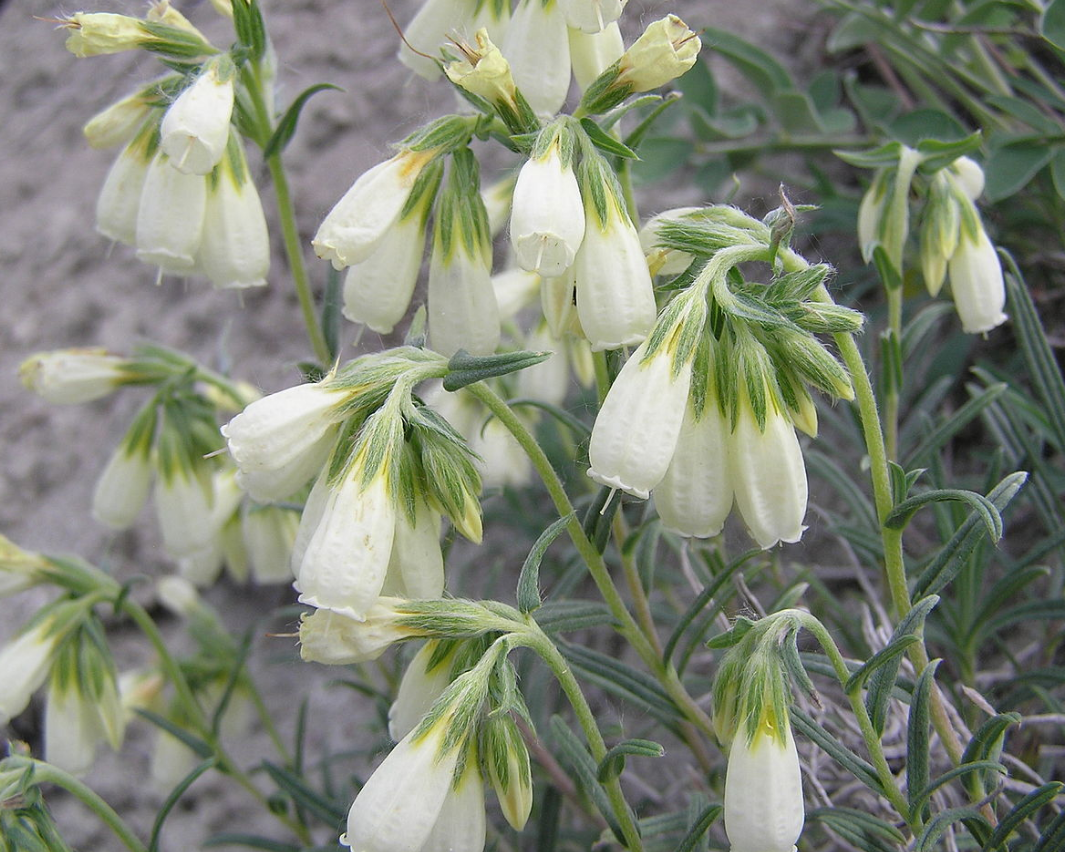TRACE-ELEMENT COMPOSITION OF SOME GENUS ONOSMA SPECIES
UDC 547.913:581.13:582.71
Abstract
The genus Onosma belongs to the tribe Lithospermeae of the family Boraginaceae and is represented by 230 species. In folk medicine, plants of the genus are used to treat various pathologies, including blood diseases, which may be due to the specificity of the microelement status of the plants. In this regard, the microelement composition of the plant as a possible source of microelements for the hematopoietic complex is of particular interest, as well as to assess the possibility of using the microelement composition for standardization of raw materials. The objects of the study were the aboveground parts of plants of the most common species – O. simplissima L., O. gmelinii Ledeb. O. arenaria Waldst. et Kit. and O. barsczewskii Lipsky collected in the flowering phase. The content of microelements was determined by mass spectroscopy with inductively coupled plasma. All measurements were carried out on 5 samples and the obtained values were averaged. As a result of the analysis, the content of 61 macro- and microelements was determined. The obtained data were analyzed using the author's methodology based on the application of cluster analysis methods.
It was found that the microelement status of the studied plants has a pronounced species specificity and is determined to a greater extent by the plant genome, rather than by its place of growth.
As a result of the studies, it was found that the use of onosma preparations may be ineffective as antianemic agents since the iron in them is likely to be in the form of a cytotoxic ferro-ion.
Species specificity of the microelement status of plants can be used to determine the authenticity of raw materials.
Downloads
Metrics
References
Sivakrishnan S., Swamivelmanickam M. Journal of Global Pharma Technology, 2019, vol. 11, no. 9, pp. 10–24.
Chacon Ju., Luebert F., Hilger H.H., Ovchinnikova S., Selvi F., Cecchi L., Guilliams M., Hasenstab-Lehman K.E., Su-tory K., Simpson M.G., Weigend M. Taxon, 2016, vol. 65(3), pp. 523–546. DOI: 10.12705/653.6.
Yan Yu., Wei X., Qiu B., Wang G., Zhou B., Zhang M., Liu Y., Li S., Gao B., Li M. Scientifc Reports, 2023, vol. 13, 7636. DOI: 10.1038/s41598-023-34830-4.
Kumar N., Kumar R., Kishore K. Phcog. Rev., 2013, vol. 17, pp. 140–151. DOI: 10.4103/0973-7847.120513.
Popov M.G. Flora SSSR. [Flora of the USSR]. Moscow; Leningrad, 1953, vol. 19, pp. 97–691. (in Russ.).
Wazir N.U., Khan I.A., Javed A., Khan T., Jabbar A. Saudi Journal of Biological Sciences, 2023, vol. 30, no. 8, pp. 1–9. DOI: 10.1016/j.sjbs.2023.103712.
Ozgen U., Houghton P.J., Ogundipe Y., Coşkun M. Fitoterapia, 2003, vol. 74, no. 7-8, pp. 682–685. DOI: 10.1016/s0367-326x(03)00161-8.
Jabbar A.А., Abdullah F.O., Hassan A.O., Galali Y., Hassan R.R., Rashid E.Q., Salih M.I., Aziz K.F. Molecules, 2022, vol. 27, 8687. DOI: 10.3390/molecules27248687.
Shilov S.V., Ustenova G., Kiyekbayeva L.N., Korotetskiy I.S., Kudashkina N.V., Zubenko N.V., Parenova R.A., Jumagaziyeva A.B., Iskakbayeva Z.A., Kenesheva S. International Journal of Biomaterials, 2022, article 4427804. DOI: 10.1155/2022/4427804.
Kruglov D.S. European Journal of Natural History, 2007, vol. 5, pp. 56–57.
Kruglov D.S., Kruglova M.Yu., Olennikov D.N. Russian Journal of Bioorganic Chemistry, 2020, vol. 46, no. 7, pp. 1378–1384. DOI: 10.1134/S1068162020070055.
Kruglov D.S., Prokusheva D.L., Velichko V.V. Farmatsiya, 2023, no. 6, pp. 12–18. DOI: 10.29296/25419218-2023-06-02. (in Russ.).
MUK 4.1.1483-03. Opredeleniye soderzhaniya khimicheskikh elementov v diagnostiruyemykh biosubstratakh, pre-paratakh i biologicheski aktivnykh dobavok metodom mass-spektrometrii s induktivno-svyazannoy argonovoy plazmoy: metodicheskiye ukazaniya. [MUK 4.1.1483-03. Determination of the content of chemical elements in diag-nosed biosubstrates, preparations and biologically active additives by mass spectrometry with inductively coupled argon plasma: guidelines]. Moscow, 2003, 36 p. (in Russ.).
Kruglov D.S., Prokusheva D.L. Khimiya rastitel'nogo syr'ya, 2022, no. 3, pp. 139–149. (in Russ.).
Kruglov D.S. Vestnik Permskoy gosudarstvennoy farmatsevticheskoy akademii, 2022, special edition, pp. 53–57. (in Russ.).
Shafarevich I.R., Remizov A.O. Lineynaya algebra i geometriya. [Linear algebra and geometry]. Moscow, 2009, 511 p. (in Russ.).
Kruglov D.S. Khimiya rastitel'nogo syr'ya, 2010, no. 1, pp. 131–136. (in Russ.).
Kruglov D.S., Velichko V.V., Kartashova M.Ye. Khimiya rastitel'nogo syr'ya, 2023, no. 4, pp. 269–276. DOI: 10.14258/jcprm.20230412575. (in Russ.).
Hartigan J.F. Clustering algoritms. N.Y.: John Wiley & Sons Inc., 1975, 366 p.
Kruglov D.S. Nauchnoye obozreniye. Meditsinskiye nauki, 2017, no. 4, pp. 26–41. (in Russ.).

Copyright (c) 2024 chemistry of plant raw material

This work is licensed under a Creative Commons Attribution 4.0 International License.

This work is licensed under a Creative Commons Attribution 4.0 International License.
The authors, which are published in this journal, agree to the following conditions:
1. Authors retain the copyright to the work and transfer to the journal the right of the first publication along with the work, at the same time licensing it under the terms of the Creative Commons Attribution License, which allows others to distribute this work with the obligatory indication of the authorship of this work and a link to the original publication in this journal .
2. The authors retain the right to enter into separate, additional contractual agreements for the non-exclusive distribution of the version of the work published by this journal (for example, to place it in the university depository or to publish it in a book), with reference to the original publication in this journal.
3. Authors are allowed to post their work on the Internet (for example, in a university repository or on their personal website) before and during the review process of this journal, as this may lead to a productive discussion, as well as more links to this published work.











